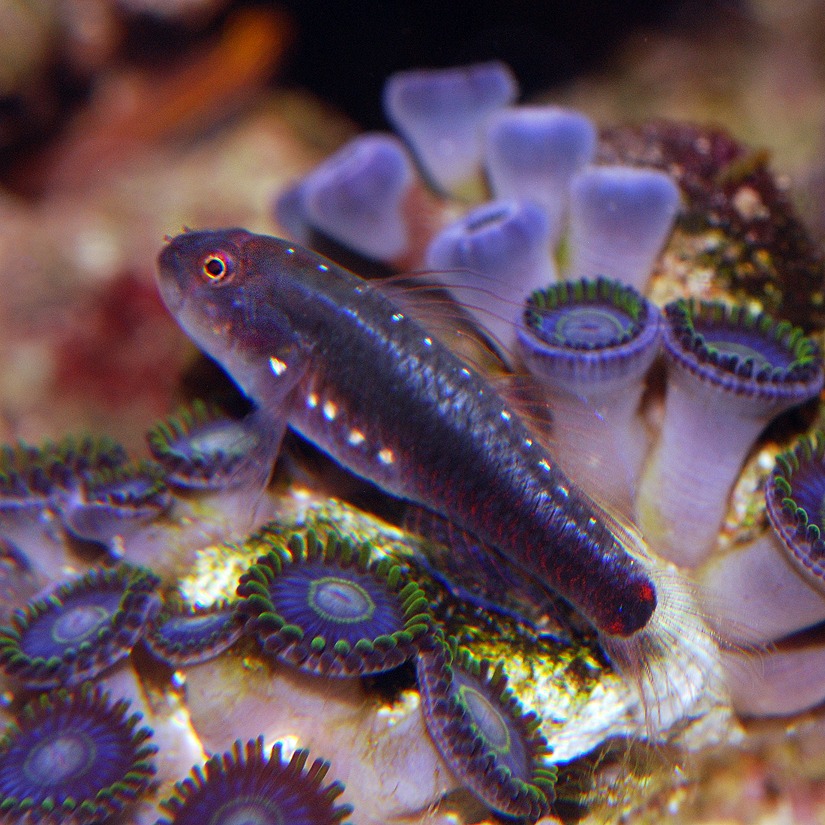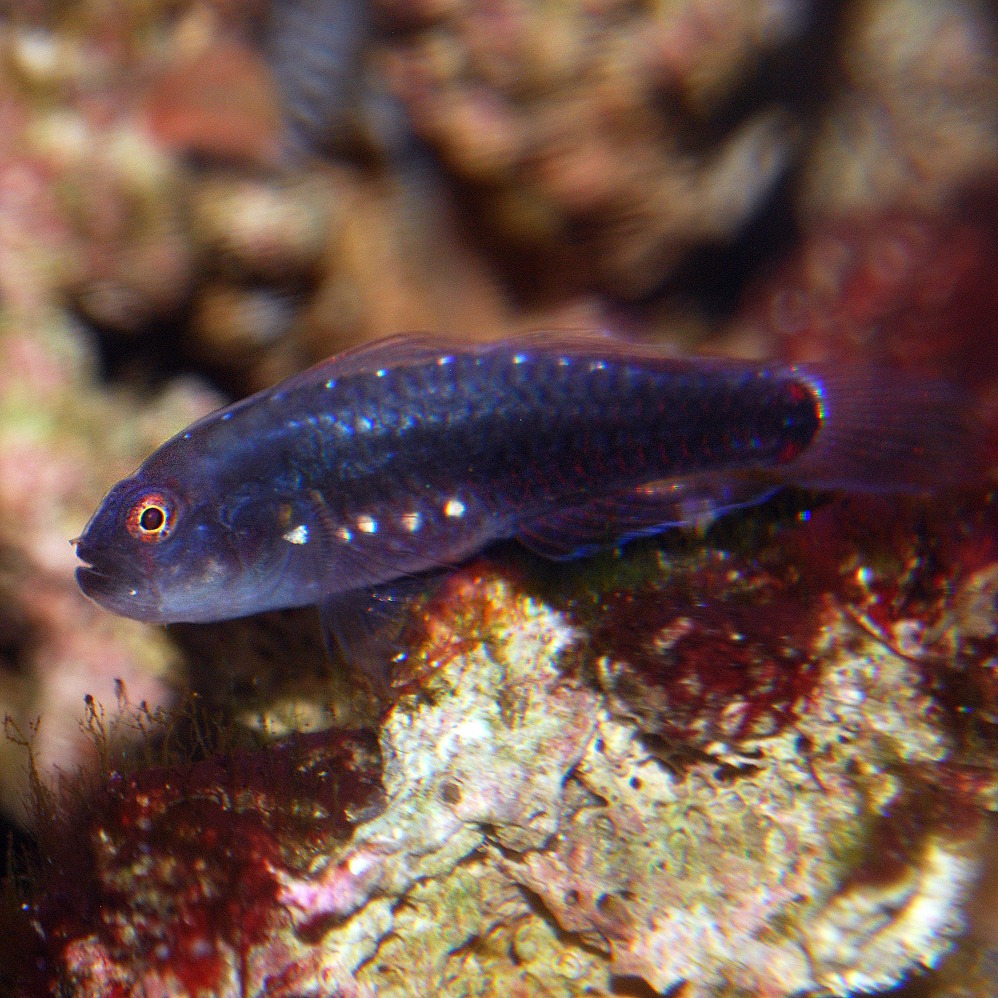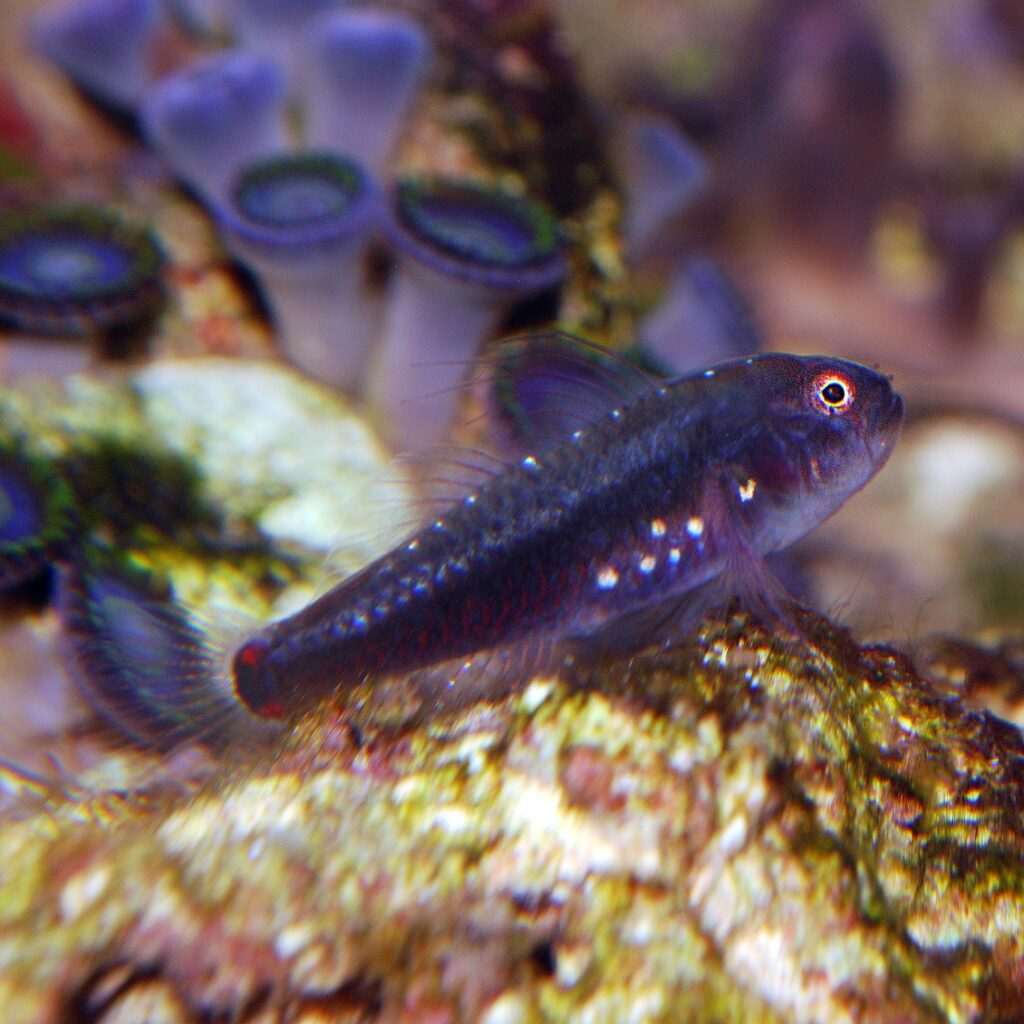
via Biota Aquariums
Introducing a new Biota captive-bred nano goby: The Biota Cosmic Nano Goby, Eviota lachdeberei. We think it is out of this world! A fun and beautiful nano goby with a dark body and white dots on the belly and a row of white spots on the dorsal ridge. Two vibrant blood red blotches at the base of the tail stand out with complementing subtle red markings in the eyes and edges on the scales of the ventral side of the fish. This unique coloration makes the goby look like a cosmic scene of black space, white stars, and red nebulae—all in a small fish that reaches a maximum size of just 2.1 cm (.8 in).

This pygmy goby is perfect for small nano and pico aquariums. They are incredibly peaceful and do well in small groups. They can be found guarding nooks and crannies in the rockscape and darting around searching for food.
Eviota gobies are tiny, reef safe, and peaceful, making them the perfect reef citizens, and they even get along well with other nano goby species. They won’t eat coral or small inverts (except tiny copepods of course). Avoid housing these with larger, more aggressive fish.

The Cosmic Goby is interesting in its own right, but if you’re a reefer who is fascinated by symbiotic relationships, the Cosmic Goby, a.k.a. Lachdebere’s Pygmy Goby or the Redlight Eviota Goby, is known for inhabiting Heliofungia plate corals in the wild.
Eviota prefer gentle flow and are social fish that will be more active in small groups, but may also be kept singly.
These captive-bred Cosmic Gobies are currently feeding on Easy Reefs DKI pellets, TDO B2, PE Calanus, and Hikari’s baby brine shrimp.
References
Eviota lachdeberei: Fishbase
https://fishbase.mnhn.fr/country/CountrySpeciesSummary.php?c_code=583&id=7265
###




